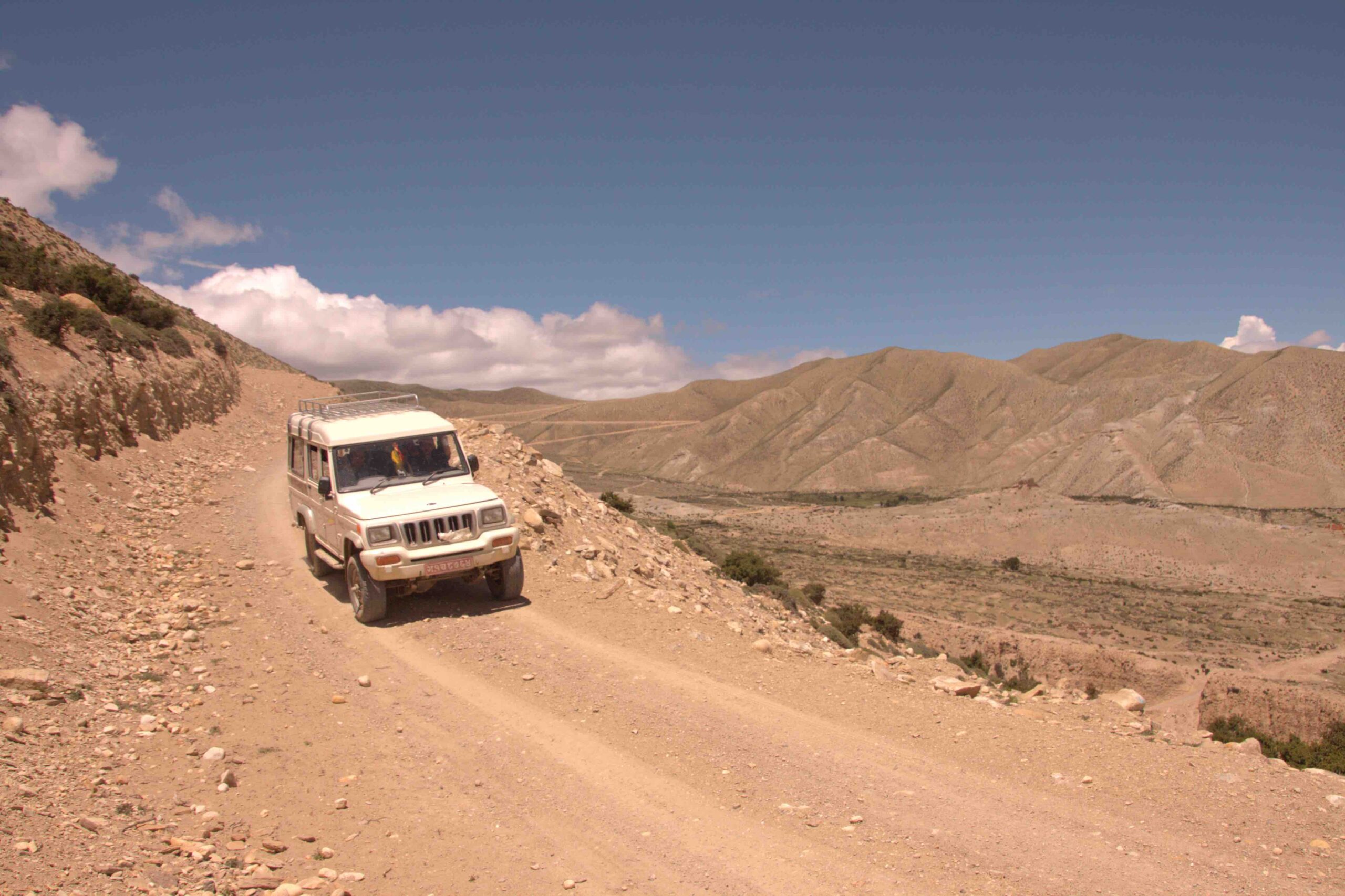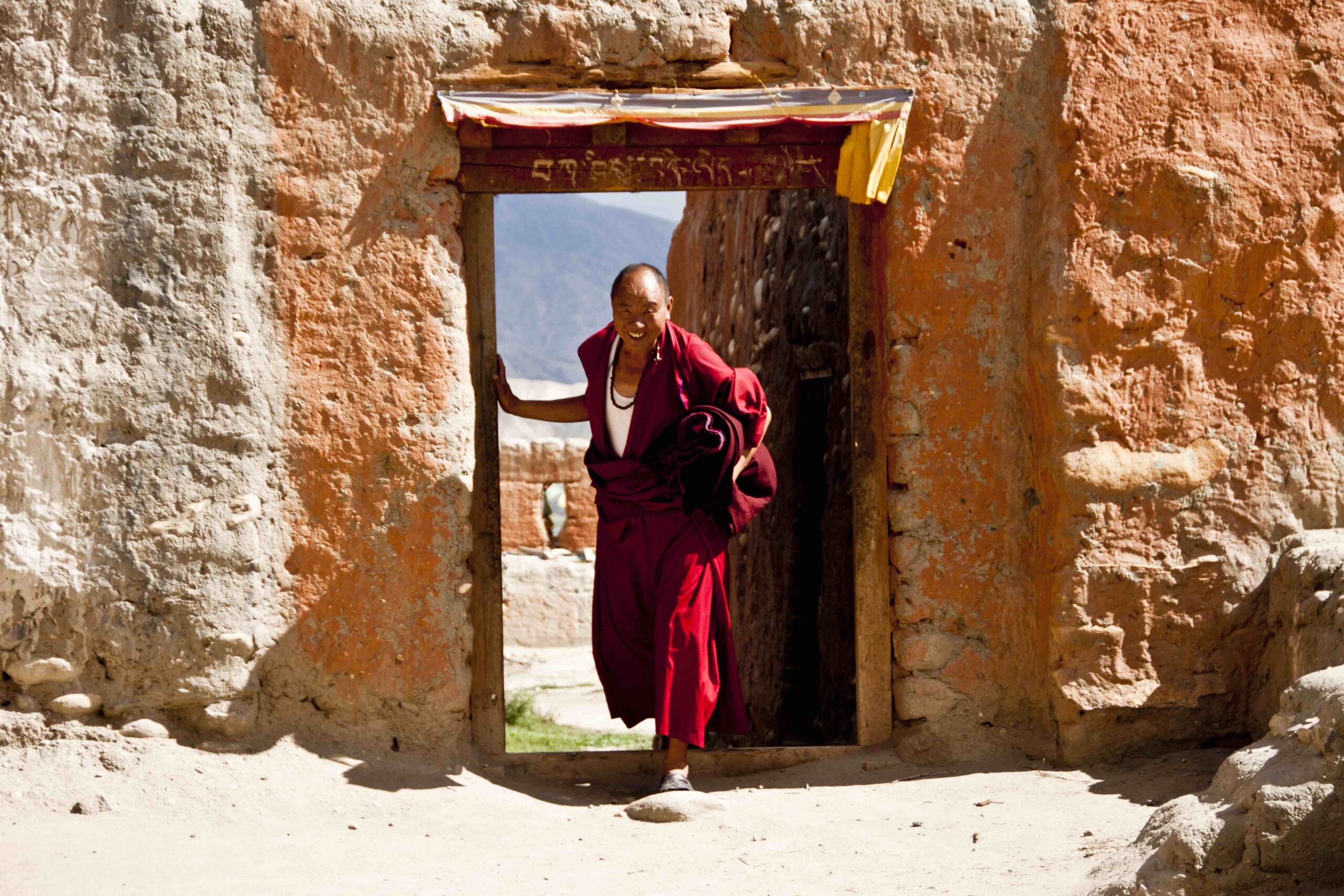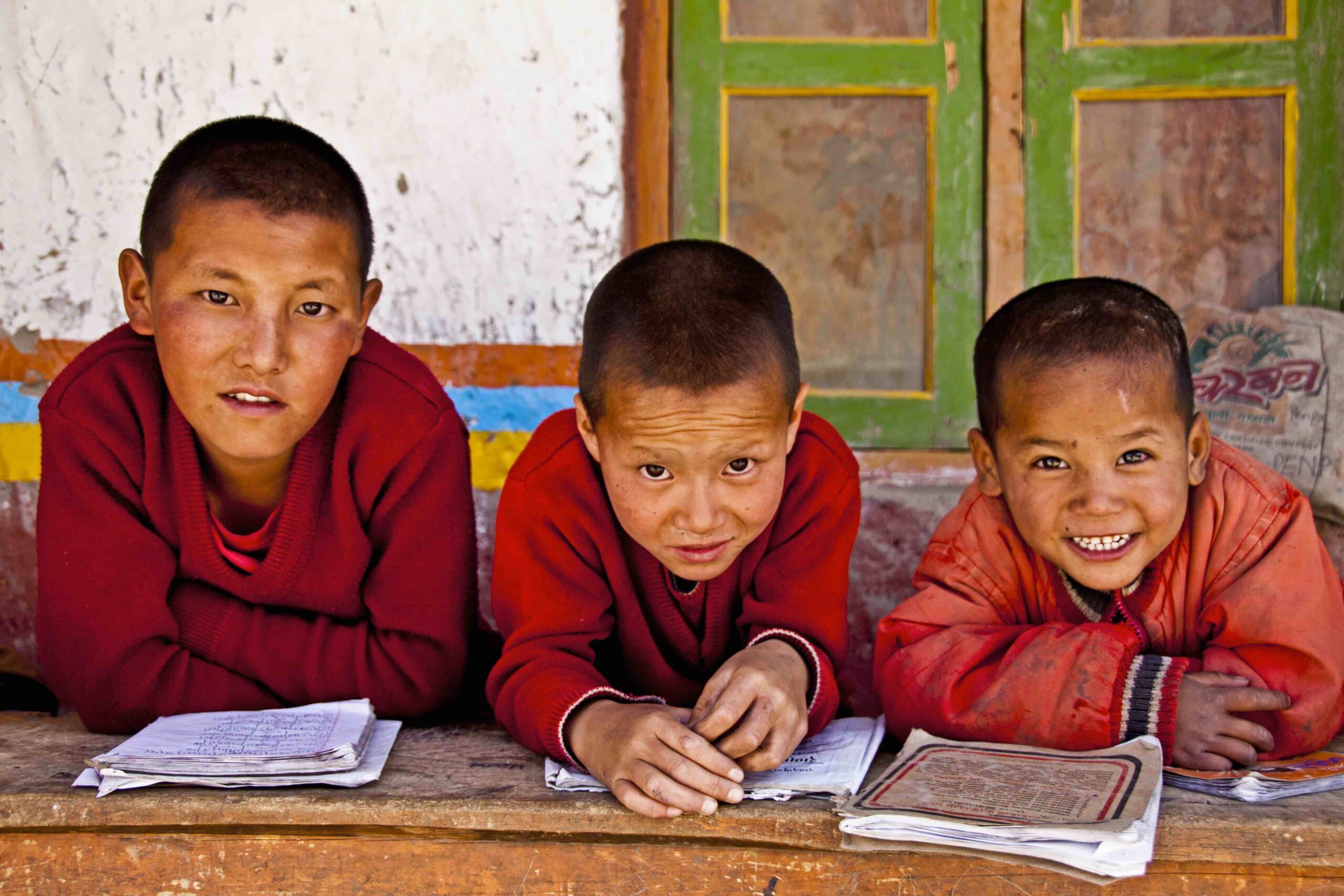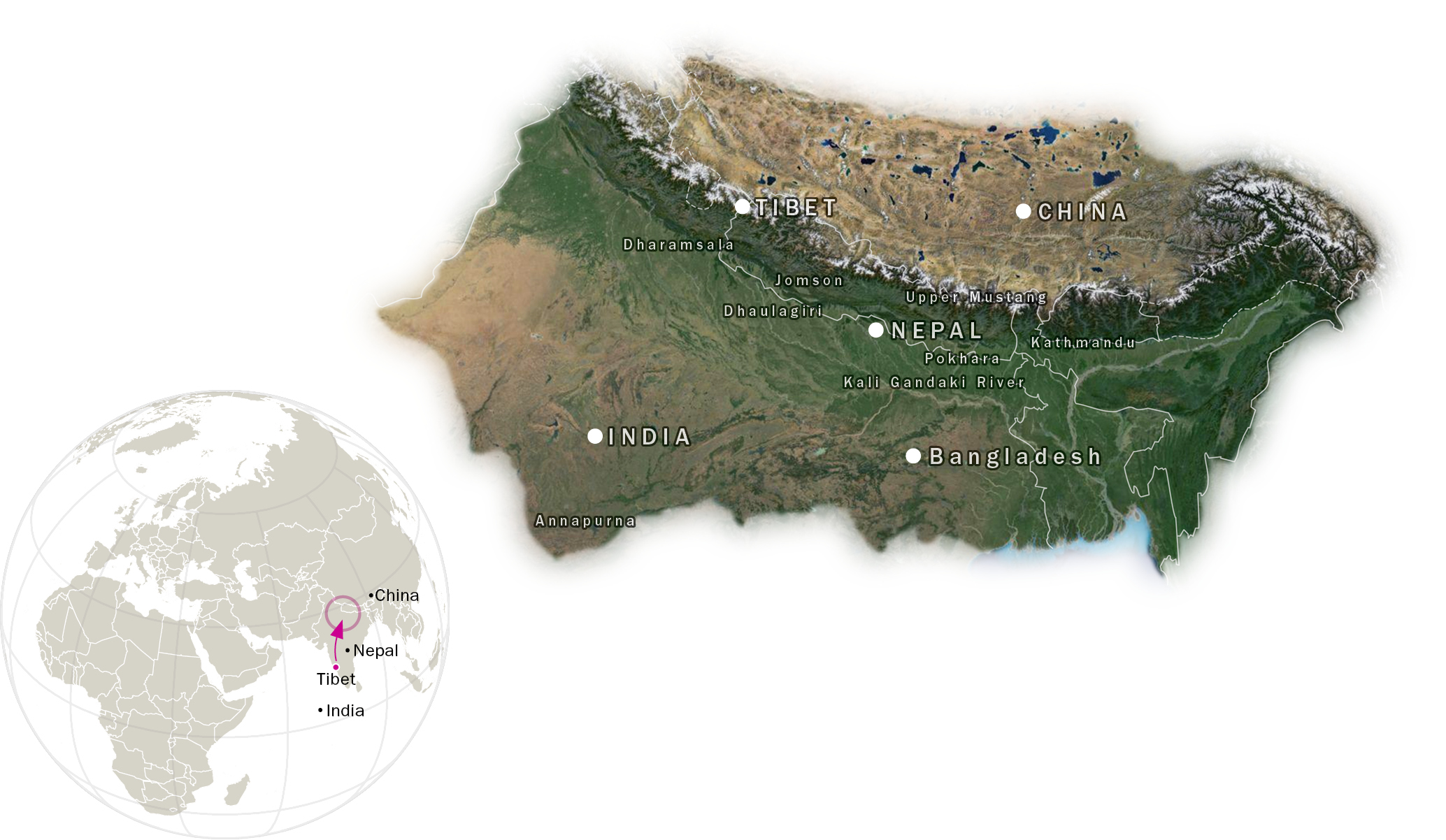
Text & photos by Saransh Sehgal
A Buddhist Kingdom on the Edge.
Within the imposing Himalayan mountains lies the former kingdom of Mustang that now has to face the question: Do all roads lead to modernity?
For centuries, the Kingdom of Mustang, nested beyond the 8,000-metre peaks of Annapurna and Dhaulagiri in the Himalayas just inside Nepal’s border with Tibet, has been an important transit zone on the salt trade route, between the dry saline lakes of Tibet and the large markets in the Indian Subcontinent.
The only way then for locals to connect with the outside world was to depend on horses, mules and week-long journeys by foot alongside the Kali Gandaki riverbed for the trading of salt and livestock. The modernity that had encroached elsewhere remained far from the kingdom, and the borders remained closed to foreigners as recently as the turn of this century. The region had been the base of the Tibetan Khampa guerrillas trained by the CIA during their covert war against China in the 1960s, and had been thus classified a “politically fragile” area by government bodies.
The first Western explorer, the Swiss geologist Toni Hagan, entered the kingdom in the 1950s, and the first official tourist group arrived in 1992. It is generally accepted that many aspects of the community’s way of life remain similar to the way they were in the 1500s, even though Mustang’s status as a kingdom ended in 2008, when its suzerain Kingdom of Nepal became a republic. Since then, the Nepalese government has opened the high-altitude region to a few select trek groups each year, accompanied by a local guide.
In the summer of 2013, I was among the lucky ones to have been granted special permission by the government of Nepal to visit. The idea of visiting Mustang is one that I had cherished since childhood, after listening to tales of this lost kingdom from my exiled Tibetan friends, growing up alongside them in their de facto capital of Dharamsala.
For decades, many Tibetans from inside Tibet had escaped into exile through Mustang, hoping for a better life, leaving their homeland due to the increasingly repressive Chinese policies in their regions. Tibet’s third highest lama, the 17th Karmapa Ogyen Trinley Dorje, also escaped into India via the Mustang route in 2000. Each of them has a special memory of Mustang. Their belief is that Tibetan culture, religion and traditions are still believed to be purest there, similar to those of the rest of Tibet before the Chinese occupation. Upper Mustang remains one of the most isolated inhabited regions in Asia and has some of the most forbidding terrain on the planet, linking China and India through Nepal.

Tamara V. Rechenberg, a German friend and photographer, and I wanted to take this trip during a heavy monsoon in Nepal and India – knowing that the Upper Mustang is a rain shadow area and that August is the best time to photograph the region. It was in mid-August that we reached Pokhara, Nepal, from where we booked a local trek with a guide, whom we specifically requested be from Mustang. Trips to the region without a guide are not allowed and require a special permit from the trekking agency.
These permits are granted for 10 days only and come with a fixed day of entry and return, all for the price of US$500. The income from this special permit is a significant element of Upper Mustang’s tourism budget and of its development; according to the Nepalese government, a majority share goes to the people of Mustang to meet their development needs and for their general benefit, though Mustang locals deny that the funds ever reach them. These special permits are only issued in Kathmandu and Pokhara.
My adventure to this threatened place of living history began with a flight from Nepal’s second-largest city, Pokhara, to Jomsom, where the restricted area of Upper Mustang starts. The flight was remarkable, soaring through one of the deepest gorges in the world.

When I reached Kagbeni, the entry point to this restricted region, I was made aware by my guide, Tenzin, a Loba (ethnic Tibetans from Lo, of the Mustang tribe), that we would need to calculate distances of the journey in days and that we would require a medieval-style caravan to get there.
At the entry checkpoint, I came to know that the region hosts no more than 2,000 foreigners a year. The special permit offers explorers like us a glimpse of the tiny Tibetan kingdom, to witness ancient dwellings and wildlife not found elsewhere. Foreign visitors remain officially forbidden from mingling with local people, in order not to influence their customs. My quest was to trek until the walled town of Lo Manthang, which is the capital of Mustang and houses monasteries and the king’s palace.
Tenzin told us that tourists over the years have benefitted from working horses, donkeys, and mules, which remain the only method of transporting goods between the villages. For the Loba, they are a daily scene, as life goes on at an unhurried pace. While on my way across the small villages with Tibetan prayer flags hanging outside the houses, I found that there was neither electric power nor any use of modern technology in the region. I hiked along the mountains through valleys and riverbed paths, spending my last two nights in homestays offered by local families alongside the route, and I witnessed a dirty patch of road being constructed by Nepali workers on the hillside. Tenzin reported that a new highway linking Mustang to the Tibet Autonomous Region (TAR) inside China to the north, and the rest of Nepal to the south, was being built.

The scene really captured my attention and I stopped to look at how much construction had already been done. As I looked farther north, I could see a long trail of a significant enough breadth that a truck could easily travel along it. Tenzin nodded. “They have completed construction of a long stretch.”
Sweeping change was coming and much of Mustang can now be seen in transition. Some locals I met on my way shared that as the road nears completion, it poses substantial implications; that the cost of this development would eventually change the entire outlook of the former kingdom and dilute its preserved culture and lifestyle. Inevitably, the intended road would also bring enormous assistance to the Loba people, who have been longing for such facilities as better hospitals, power-generating plants, schools and the use of some modern goods that the outside world takes for granted. But conversations among the locals were apprehensive.
For the rest of this article (Asian Geographic No.108 Issue 6 /2014) and other stories, check out our past issues here or download a digital copy here
The 25th anniversary of the largest and longest running dive show, Asia Dive Expo (ADEX) is set to occur on the 11-14th April 2019. Centred on the theme – Plastic free Future, ADEX is more than just a dive show with its commitment to the environment. Among an exciting lineup of programs, attendees can look forward to a Future Forward Series of Panel Discussion on the Single-Use Plastic Conundrum in Asia, on 13th April.
So join us at the event, get inspired and for all you know, you might just liberate the inner diver in you! More details of the event here.











